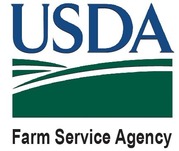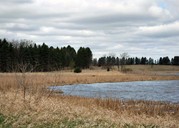
|
|
Saline County USDA - December 20, 2023
|
|
|
|
Farm Service Agency | Natural Resources Conservation Service | Risk Management Agency
|

As we near the end of 2023, we want to wish all our customers a very Merry Christmas and a Happy New Year. We wish you all the best as we move into 2024. We also want to remind you of upcoming application deadlines for three financial assistance programs for adverse weather impacts in 2023. If you had impacts and have not yet inquired about program qualifications, please contact our office. The program(s) include:
Livestock Forage Disaster Program (LFP) provides financial assistance to livestock producers who have grazing land that has been impacted by drought. To qualify, participants must have eligible grazing livestock and grazing land (owned or leased). The deadline to apply is Jan. 30, 2024.
Emergency Assistance for Livestock, Honeybees and Farm-raised Fish Program (ELAP) is available to producers who have suffered above normal expenses for hauling feed or water to livestock or hauling livestock to forage/grazing acres due to the impacts of drought. The deadline to apply is Jan. 30, 2024.
Livestock Indemnity Program (LIP) is a financial assistance program to help with the impacts of livestock lost above normal mortality rates, or injured and sold, due to natural disaster. If you suffered livestock losses due to extreme weather in 2023, contact our office for more information about this program. The deadline to apply is Feb. 29, 2024.
In closing, we want to congratulate Bob Homolka on his election to the Saline County FSA Committee. Thank you to everyone who returned a County Committee election ballot for this year’s election.
Wishing you a happy and healthy 2024.
--Aaron Peithmann
|

Producers participating in farm safety-net programs administered by USDA are required to abide by certain conditions on any land owned or farmed that is considered a wetland. To maintain compliance with wetland conservation provisions, producers must agree, by certifying on form AD-1026, they will not plant an agricultural commodity on a converted wetland or convert a wetland to produce an agricultural commodity.
Non-compliance could negatively impact producer benefits received through USDA programs administered by the Farm Service Agency (FSA), the Natural Resources Conservation Service (NRCS) and the Risk Management Agency (RMA).
Specifically, persons are ineligible for benefits under certain FSA, NRCS and RMA programs if they plant an agricultural commodity on wetlands that were converted after Dec. 23, 1985, or if they convert a wetland after Nov. 28, 1990. Some examples of the conversion of a wetland are draining, dredging, tiling, leveling or removing woody vegetation. Program regulations indicate that even accidental planting of a small portion of a converted wetland must be treated as a wetland violation, and therefore would make the producer ineligible for USDA benefits on all farms for which they receive benefits.
Producers should contact their local USDA Service Center prior to tiling, clearing trees, dredging, land leveling, straightening a ditch, et cetera. For notification, the producer will be asked to complete FSA form AD-1026, identifying the area for the proposed activity on a map and informing what activity will be done. FSA then refers this information to NRCS, who will determine whether a wetland exists and whether there are any exemptions that would allow the producer to proceed with the project and not jeopardize safety-net benefits.
If a farm is found in violation of wetland provisions, all producers associated with the land (including their affiliates) are ineligible for program benefits and the violation could affect prior year payments.
In some cases, USDA conservation compliance policy allows for a producer who has had a wetland violation to offset that loss through mitigation to maintain eligibility for USDA benefits.
For more information on wetland conservation compliance, contact the Saline County USDA Service Center at (402) 821-3292.
|

Accessing capital to begin, extend or support an agriculture operation can be especially challenging to new producers. Farm Service Agency offers a variety of resources to assist those who are just starting out, including “Beginning Farmer” direct and guaranteed loan programs that have funding targeted for qualified applicants. To access these programs, beginning farmers/ranchers must meet these basic qualifiers:
- Has operated a farm/ranch for not more than 10 years
- Will materially and substantially participate in the operation of the farm/ranch
- Agrees to participate in a loan assessment, borrower training and financial management program required by FSA
- Does not own a farm in excess of 30 percent of the county’s average size farm.
Individuals interested in learning more should contact their county FSA office. A couple of loan programs to inquire about include:
-
Direct Farm Ownership Down Payment Loan – this type of loan may be used by beginning farmers/ranchers to purchase a farm or ranch. It requires a 5% cash down payment, but also offers a low interest rate that can be as low as 1.5%.
-
Direct Farm Ownership Loan – Joint Financing - this type of loan may be used by any qualified borrower but is often used by beginners to purchase a farm or ranch with no down payment required. Financing is provided jointly by FSA and another lender. This program also offers a low interest rate, which can be as low as 2.5%.
-
Microloans – this type of loan may be used by any qualified borrower but is designed to meet the needs of small and beginning farmers/ranchers by easing some requirements and offering less paperwork. It can be used for purchasing a farm or ranch (ownership), but also for operational expenses (operating) and other needs. It does have a $50,000 loan limit for each type of loan.
Other loan programs may be appropriate, depending on individual needs. Potential customers are encouraged to check out the Farm Loan Discovery Tool to review the various loan options. There also is an online Loan Assistance Tool, which takes potential applicants through an eligibility checklist and provides line-by-line guidance on the FSA loan paperwork.
There are FSA farm programs that have specific provisions for individuals meeting the beginning farmer/rancher definition, and producers are encouraged to ask about these programs at their FSA office. For example, the Noninsured Crop Disaster Assistance Program (NAP) helps producers manage risk for both crop losses and crop plantings that were prevented due to natural disaster. NAP is available for crops not covered by federal crop insurance and basic coverage is available at no cost to qualified beginning farmers/ranchers. Other programs with beginning farmer/rancher provisions include the Emergency Conservation Program and the Dairy Margin Coverage Program, among others.
For additional information about these and other FSA resources for beginning farmers/ranchers, contact the Gage County USDA Service Center at 402-223-3125.
|
|
|
|
Wilber USDA Service Center
211 S. Wilson St
Wilber, NE 68465
Phone: 402-821-3292
|
Aaron Peithmann, FSA
Aaron.Peithmann@usda.gov
|
Scott Bohaty, NRCS Conservationist
Scott.Bohaty@usda.gov
|
| |
|
|
Saline County FSA Committee:
Bob Homolka
Travis Fuller
Matt Frew
Donna Hansen, Advisor
|
|
|
FSA Program Technicians:
Tessa Duba
Breanna Kovar
Angela Kuhlmann
Diane O'Neel
|
|
|
|